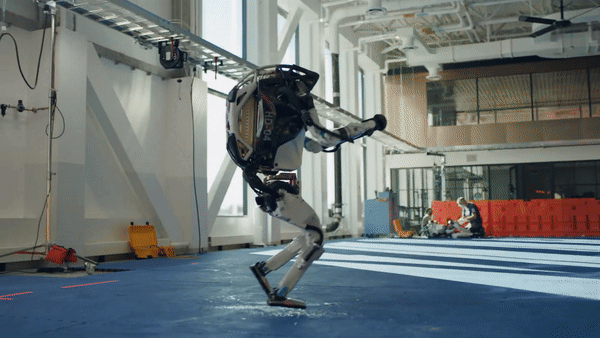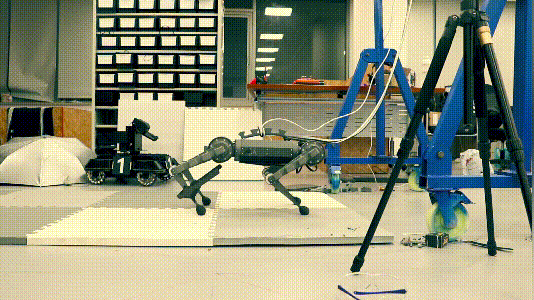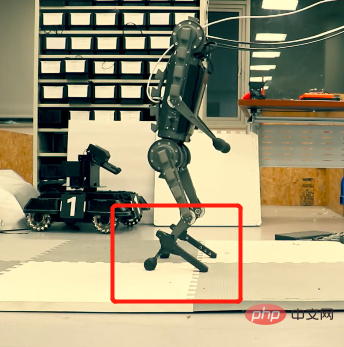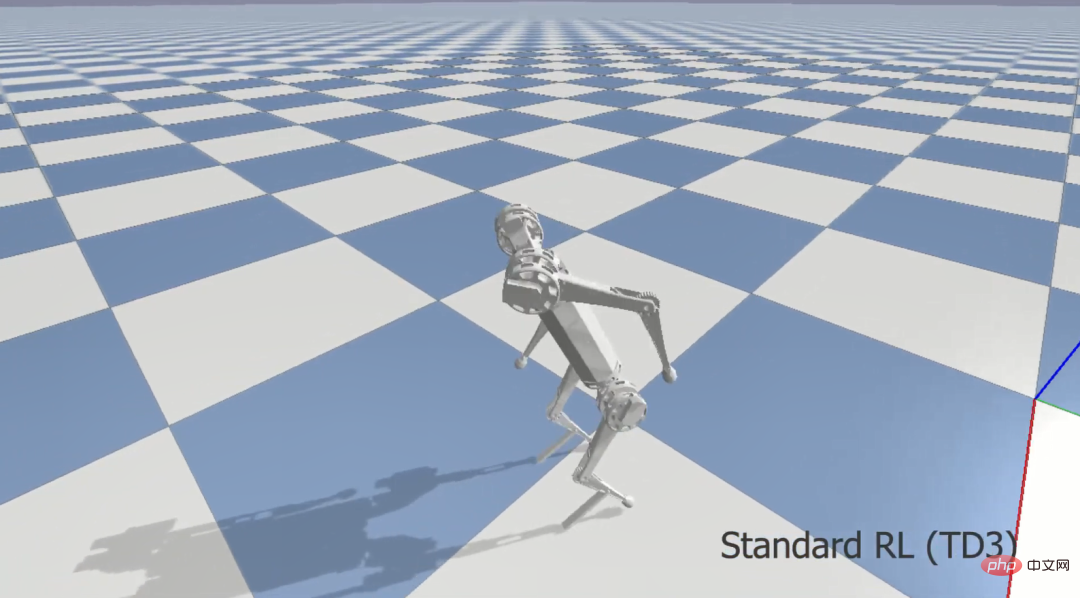Home >Technology peripherals >AI >Stand up, don't kneel! A stick helps the robot dog complete the evolution from 'dog' to 'human'. The key is also to adapt to different brands of dogs
Stand up, don't kneel! A stick helps the robot dog complete the evolution from 'dog' to 'human'. The key is also to adapt to different brands of dogs
- PHPzforward
- 2023-04-14 21:49:011695browse
If you have money and want to buy a robot, should you buy a four-legged robot? Or is it better to buy a bipedal robot?
The four-legged robot is like a pet and can even be taken out for a walk;

The two-legged robot is more like a partner and can be used for you in the future Do housework.

Every seems to have its own merits, is it hard to decide?
As an adult, the answer to Digest is of course:

Last week, the 2022 IEEE/RSJ Intelligent Robots and Systems International was held in Kyoto, Japan. At the conference (IROS 2022), researchers from Worcester Polytechnic Institute (WPI) and Shanghai University of Science and Technology proposed a new solution.
Let the quadruped robot evolve into a biped robot. When it wants to be on four legs, it will be on four legs. When it wants to be on two legs, it will be on two legs. How wonderful!

Suitable for different models of four-legged robots
In fact, this method is not new. We have seen the transformation from a four-legged robot to a two-legged robot before. There are many robots out there, but they are all carefully engineered to do this, and they come at a cost in terms of weight, complexity, and cost.
What’s unique about this research from ShanghaiTech University is that it can be applied to any quadruped robot—with some very minor hardware modifications, your quadruped robot can also become a biped robot. .
We can think of this operation as an "evolution" from four-legged to bipedal upright walking.
The mechanical part of this evolution is a 3D-printed support frame mounted on the tibia of the quadruped robot’s rear leg.

This support frame provides additional support to the rear legs of the quadruped robot, allowing the robot to stand and walk on two legs. Without this support frame, the robot would be difficult to keep it steady.
The video shows this at work on a mini-cheetah robot that looks like MIT, but again, a quadruped robot can evolve regardless of brand, as long as it meets a few basic requirements.
Evolution of Quadruped Robots - Biped Robots
Quadruped robots usually have good stability and carrying capacity, while biped robots have higher flexibility for different tasks and environments and adaptability.
Just like what we see in nature, quadrupeds move faster, and robots move significantly faster on four legs, but it is also the same as humans evolving from quadrupeds to bipedal upright walking. While speed is sacrificed, the ability to process the environment is stronger (for example, Australopithecus learned to bring food to its mouth with its hands).
When a quadruped robot's two front paws become "robotic hands", it can not only stand, but also interact more with objects and the environment.
The researchers noticed that for a fixed-structure quadruped robot, it is very easy to adapt to standing on only its hind legs, with very little performance degradation. While not as aesthetically pleasing as off-the-shelf bipedal robots, using 3D printing it is possible to mimic a human foot using a small carbon fiber support bar that extends from the leg, giving the evolved quadruped the same passive stability.
On the other hand, the active telescopic system adds a tiny motor to the leg to increase the moment of inertia of the leg during movement, thereby maintaining sports performance.
The researchers trained the robot in a simulated environment, and after transferring to the real world, its gait was stable, although it was still moving slowly.

The legs of off-the-shelf bipedal robots usually have more degrees of freedom to complete more gaits and adaptive movements, and currently researchers are also focusing on transformation The latter multi-modal aspect of bipedal robots to reap two benefits simultaneously: the stability and speed of a quadruped, and the maneuverability and height of a biped.
Next, the researchers will further develop the robot's maneuverability and, more specifically, answer the question: "Now that it's standing up, can it do something that other robots can't do?" Woolen cloth?"
Researchers have already had some preliminary results. After mechanically modifying the forelimbs, the evolved bipedal robot can use its "front paws" to perform complex operations, which is rare among current mobile robots.
Related reports:
https://www.php.cn/link/b4631d19343f260022ee73087c6e2eab
https ://www.php.cn/link/64be20f6dd1dd46adf110cf871e3ed35
The above is the detailed content of Stand up, don't kneel! A stick helps the robot dog complete the evolution from 'dog' to 'human'. The key is also to adapt to different brands of dogs. For more information, please follow other related articles on the PHP Chinese website!
Related articles
See more- Technology trends to watch in 2023
- How Artificial Intelligence is Bringing New Everyday Work to Data Center Teams
- Can artificial intelligence or automation solve the problem of low energy efficiency in buildings?
- OpenAI co-founder interviewed by Huang Renxun: GPT-4's reasoning capabilities have not yet reached expectations
- Microsoft's Bing surpasses Google in search traffic thanks to OpenAI technology

